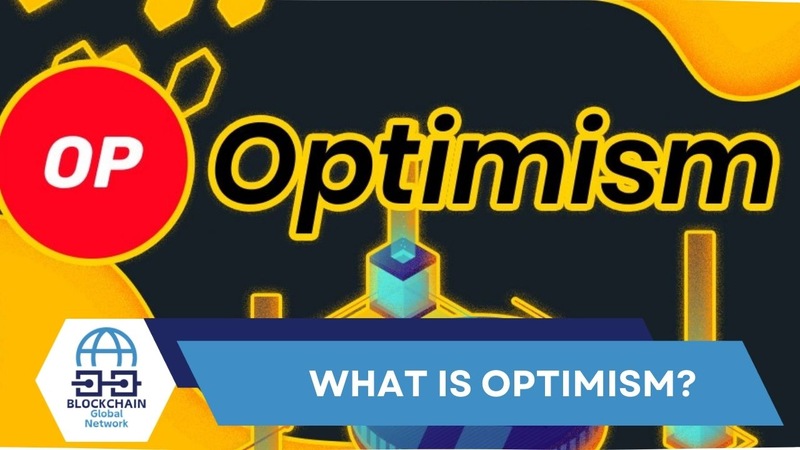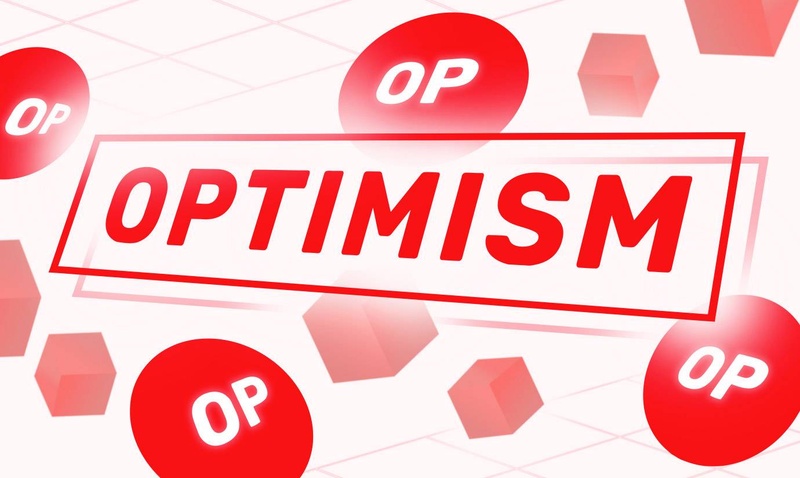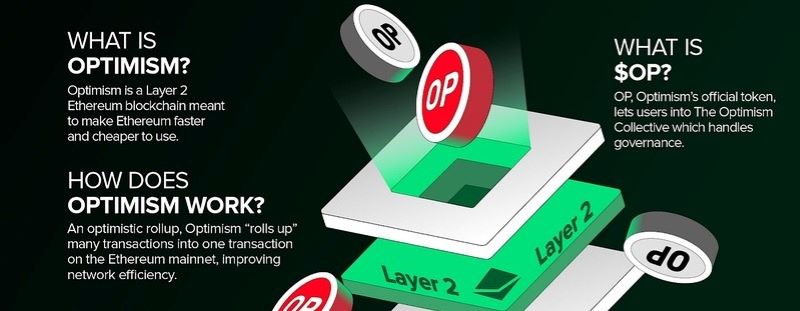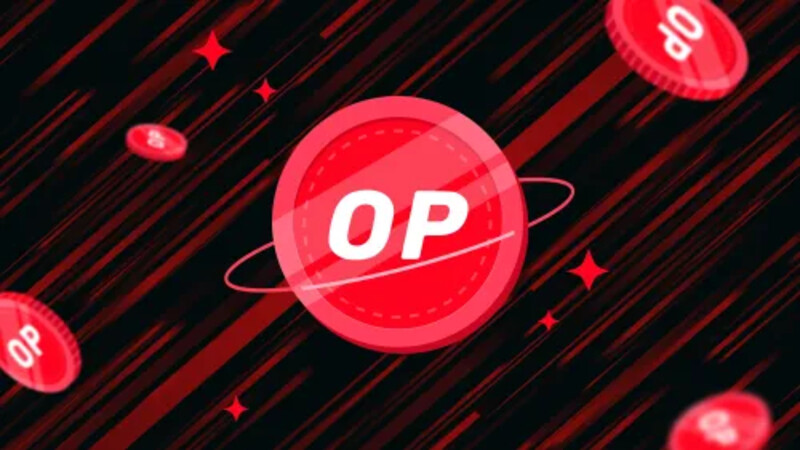Ethereum is facing scalability challenges, causing congestion and high transaction fees. To address this issue, Layer 2 solutions have emerged, and Optimism is one of the most prominent names. So what is Optimism? This article will provide you with a detailed overview of this promising scaling solution.
What is Optimism?
Optimism is a Layer 2 solution built on the Ethereum blockchain. It operates using Optimistic Rollup technology, which allows multiple transactions to be “rolled up” into a single transaction on the Ethereum network. This helps to reduce the burden on the main network, thereby minimizing gas fees and increasing transaction processing speed.
Optimistic Rollup technology
Optimistic Rollup technology operates on the principle of “optimistic assumption” that all submitted transactions are valid. Transactions are bundled into batches and processed off-chain by a validator. Only when there is a dispute about the validity of a transaction, a fraud proof is sent to the Ethereum mainnet for verification. This mechanism significantly reduces the amount of data that needs to be processed on the main network, thereby increasing speed and reducing transaction fees.

The role of the Optimism Virtual Machine (OVM)
The OVM plays a crucial role in the operation and development of Optimism. The role of the OVM can be summarized as follows:
- Execution environment for Smart Contracts: The OVM is the environment for executing smart contracts on Optimism. It operates similarly to the Ethereum Virtual Machine (EVM) on the Ethereum Layer 1 network. This means that developers can deploy smart contracts written in Solidity (a popular programming language on Ethereum) on Optimism without having to change the code too much.
- EVM compatibility: The EVM compatibility of the OVM is a major advantage. It allows existing DeFi projects on Ethereum to easily migrate to Optimism to take advantage of Layer 2 benefits such as low gas fees and fast transaction speeds. This migration often requires only a few minor code changes, saving developers time and effort.
- Enhanced scalability: The OVM helps this layer 2 solution achieve higher scalability compared to Ethereum Layer 1. By executing transactions off-chain and only sending necessary data to Layer 1, the OVM reduces the load on the main Ethereum network, thereby increasing transaction processing speed and reducing gas fees.
- Ensuring security: Although transactions are executed off-chain on the OVM, security is still ensured through the Optimistic Rollup mechanism. Transaction data is sent to Ethereum Layer 1 for verification and storage, ensuring immutability and preventing fraud.
- Supporting ecosystem development: The OVM contributes to the development of the Optimism ecosystem by providing a solid foundation for developers to build and deploy dApps. The EVM compatibility and scalability of the OVM attract many DeFi projects to this solution, creating a diverse and rich ecosystem.
Comparing Optimism with other Layer 2 solutions
As a promising Layer-2 solution, but it is not the only “player” in the market. To better understand its position, we need to compare it with other Layer-2 solutions such as zkRollups (zkEVM), Validiums, State Channels, and Plasma. Each of these technologies has its own advantages and disadvantages, suitable for different use cases.
Optimism vs. zkRollups (zkEVM)
Both are Rollup solutions, but they use different methods to verify transactions.
- Optimism: Assumes all transactions are valid and only performs verification when there is a dispute. This allows for fast processing speed and low cost, but there may be security risks if there are too many fraudulent transactions.
- zkRollups: Use zero-knowledge proofs to verify the validity of transactions without revealing transaction information. zkRollups provide higher security and faster withdrawal times, but dApp deployment is more complex and computational costs are higher.
For example, StarkNet, a popular zkRollup solution, requires developers to use the Cairo programming language instead of Solidity (the language used on Ethereum and Optimism). This can create a technical barrier for some projects.
Optimism vs. Validiums
Similar to zkRollups, Validiums also use zero-knowledge proofs to verify transactions. However, Validiums store transaction data off-chain instead of on-chain like zkRollups.
- Advantages of Validiums: Extremely low transaction fees and high scalability.
- Disadvantages of Validiums: Security depends on the third party storing the data.
For example, Immutable X, an NFT platform using Validium, partners with StarkWare to ensure data security.
Optimism vs. State Channels
State Channels allow users to perform multiple transactions off-chain and only need to send the final state to the blockchain.
- Advantages of State Channels: Instant transaction speed and near-zero cost.
- Disadvantages of State Channels: Suitable for small and frequent transactions between a fixed group of users, not suitable for complex DeFi applications.
For example, State Channels are often used in blockchain games or micropayment applications.
Optimism vs. Plasma
Plasma is an older Layer-2 solution that works by creating “child chains” on Ethereum.
- Advantages of Plasma: High scalability.
- Disadvantages of Plasma: Difficult to implement and has functional limitations.
For example, Polygon previously used Plasma, but has since switched to using other technologies such as zkRollups and Optimistic Rollups.

Key components of Optimism
This layer 2 solution is designed with a modular architecture consisting of many key components that work together to deliver optimal performance and scalability for Ethereum. Here are its most important components:
- Consensus Layer: This is the foundation of Optimism, often referred to as Layer 1 (L1). This layer 2 solution uses Ethereum as the consensus layer, inheriting the security and decentralization of the Ethereum network. This layer is responsible for maintaining the final state of the system and ensuring the validity of transactions.
- Execution Layer: The execution layer is where transactions are processed and executed. This layer 2 solution uses Optimistic Rollup to do this off-chain, increasing speed and reducing transaction costs. Execution nodes on Optimism are responsible for processing transactions and updating the state of the system.
- Sequencer: The Sequencer is an important component in Optimistic Rollup. It is responsible for receiving transactions from users, ordering them, and sending transaction data to the consensus layer (Ethereum). The Sequencer plays a central role in ensuring data availability and transaction ordering. However, this layer 2 solution is moving towards decentralizing the Sequencer to enhance security and censorship resistance.
- Verifier: Verifiers are nodes on the Optimism network that are responsible for monitoring the Sequencer and ensuring the validity of transaction data. If any fraudulent behavior is detected from the Sequencer, the Verifier will send fraud proof to the consensus layer for processing.
- Optimism Virtual Machine (OVM): The OVM is a virtual machine compatible with the Ethereum Virtual Machine (EVM), allowing developers to easily deploy applications (dApps) from Ethereum to Optimism without having to modify the code too much. The OVM plays an important role in attracting projects and building a rich ecosystem on this layer 2 solution.
- Cross-chain Bridge: The cross-chain bridge allows users to transfer assets between Ethereum and Optimism. This layer 2 solution supports various bridges such as Hop Exchange, Celer Bridge,… helping users easily move assets and participate in its ecosystem.
These key components work together to create an efficient Layer-2 solution, helping to scale Ethereum while ensuring security and compatibility. The continuous development and improvement of these components will contribute to strengthening Optimism’s position in the fiercely competitive Layer-2 market.
The Optimism ecosystem
The ecosystem of this layer 2 solution is growing stronger and more diverse, attracting the attention of both users and developers. Here is a detailed look at this vibrant ecosystem:
DeFi (Decentralized Finance)
Optimism is home to many leading DeFi projects, providing users with many options to trade, invest and manage digital assets.
DEX (Decentralized Exchange)
- Uniswap: Leading DEX with huge trading volume and high liquidity.
- Curve finance: Stablecoin-specialized DEX, offering low slippage and competitive transaction fees.
- Velodrome finance: DEX following the ve(3,3) model with a vote-escrowed mechanism, allowing users to lock tokens to increase voting rights and receive rewards.
- 1inch: DEX aggregator, helping users find the best price on multiple exchanges.
Lending & Borrowing
- Aave: Popular decentralized lending and borrowing platform, offering a variety of assets and features.
- Compound finance: Lending and borrowing platform with competitive interest rates and flash loan feature.
Derivatives
- Synthetix: Protocol allowing the creation and trading of synthetic assets representing the value of other assets.
- Lyra finance: Decentralized options trading platform, offering a variety of options and risk management features.
- Perpetual protocol: Perpetual futures trading protocol with high leverage.
Bridge (Cross-chain Bridge)
- Optimism Gateway: The official bridge of this layer 2 solution, allowing asset transfers between Ethereum and Optimism.
- Hop Exchange: Cross-chain bridge supporting multiple networks, including Ethereum, Arbitrum, Polygon, and Gnosis Chain.
- Celer Bridge: Bridge offering fast transaction speeds and low costs.

NFTs (Non-Fungible Tokens)
It is also an attractive platform for NFT projects, thanks to its low transaction fees and fast processing speeds.
- Quixotic: Popular NFT marketplace on Optimism, offering a variety of NFT collections.
- Opensea: The world’s largest NFT marketplace, has integrated Optimism to provide a smoother NFT trading experience.
Tools & infrastructure
It is supported by a range of tools and services that make it easier for developers to build and deploy dApps.
- Chainlink: Provides reliable oracles for dApps on Optimism, helping to connect with off-chain data.
- Etherscan: Allows users to track transactions and activities on Optimism in an intuitive way.
- The Graph: Provides APIs to query blockchain data, making it easier for dApps to access data.
- Dune Analytics: Powerful on-chain data analysis tool, helping users track key metrics of this layer 2 solution.
- Alchemy: Blockchain development platform, providing tools and APIs to simplify the dApp building process.
- Tenderly: dApp monitoring and debugging platform, helping developers detect and fix bugs quickly.
Wallets & user tools
Users can access and use Optimism through a variety of wallets and other tools.
- MetaMask: Popular cryptocurrency wallet, allowing users to interact with dApps on the network.
- WalletConnect: Protocol for connecting mobile wallets with web dApps.
- Rainbow wallet: User-friendly mobile wallet, providing smooth user experience.
Community & governance
Optimism has a dynamic community that actively participates in the network governance process.
- Optimism Collective: Decentralized governance model, including the Citizens’ House and Token House, allowing users to participate in decision-making.
- Governance forum: Where the community discusses and proposes changes to this solution.
- Social media channels: Twitter, Discord, Telegram… are where the community connects and exchanges information.
This ecosystem is constantly evolving and expanding, with the emergence of many new and innovative projects. The diversity and richness of this ecosystem is a testament to Optimism’s enormous potential in driving the development of Web3.
OP Token and the Optimism Collective governance model
OP Token
OP is the native token of Optimism, used for a variety of purposes:
- Governance: OP holders have voting rights in important decisions of the Optimism Collective, including budget allocation, protocol upgrades, and development direction.
- Revenue Distribution: A portion of the project revenue (e.g., transaction fees) will be distributed to OP holders through staking or other incentive programs.
- Participation Incentives: OP is used to reward contributions to the ecosystem, such as developing dApps, participating in governance, or providing services to the network.
Tokenomics of OP
- Total Supply: 4,294,967,296 OP
- Annual Inflation: 2% (adjusted according to governance proposals)
- Distribution: Airdrop to early users, distribution to core contributors, ecosystem fund, and treasury.
Optimism Collective
It is a decentralized autonomous organization responsible for managing and developing this layer 2 solution. It is designed with the goal of creating a fair, transparent, and sustainable ecosystem.
Structure of the Optimism Collective
This organization consists of two houses:
- Citizens’ House: Represents the user community, focusing on distributing funding for public goods projects.
- Token House: Represents OP token holders, focusing on protocol upgrades, treasury management, and other technical decisions.
Operating mechanism
These two houses operate in parallel and complement each other. The Citizens’ House proposes and votes on public goods projects, while the Token House is responsible for allocating funds and implementing technical decisions.
Objectives
- Promote the development of the Optimism ecosystem.
- Support public goods projects that benefit the entire ecosystem.
- Empower the community to participate in the decision-making process.
- Build a decentralized, transparent, and sustainable governance system.
Role
The Optimism Collective is an innovative governance model, combining the power of the community and tokens to create a decentralized and sustainable ecosystem. This is one of the important factors that helps the project attract the attention of users and developers.
How to participate in governance and earn OP Tokens
You can participate in Optimism’s governance system and earn OP tokens in several ways:
- Hold and stake OP tokens: Participate in voting in the Token House.
- Join the Citizens’ House: Contribute to public goods projects, propose ideas, and vote on proposals.
- Contribute to the ecosystem: Develop dApps, provide services to the network, write articles, translate documents…

Advantages of Optimism
- Superior transaction speed: This layer 2 solution uses Optimistic Rollup technology, allowing off-chain transaction processing at significantly higher speeds than Ethereum Layer 1. This provides a smoother experience for users, especially in activities that require fast processing speeds such as DeFi transactions.
- Extremely low transaction fees: By processing transactions off-chain and “bundling” multiple transactions into one, this solution significantly reduces gas fees compared to Ethereum. This helps users save on transaction costs, especially for small and frequent transactions.
- EVM compatibility: The OVM is designed to be compatible with the Ethereum Virtual Machine (EVM), allowing developers to easily deploy existing dApps from Ethereum to Optimism without having to modify the code too much. This saves time and effort, while promoting ecosystem development.
- Security inherited from ethereum: This layer 2 solution is built on the Ethereum platform and inherits security from the Ethereum network. Although Optimistic Rollup may have security risks in some cases, in general, it is still considered a safe and reliable solution.
- Strong development community: The project has a large, enthusiastic community of developers and users who are always ready to support each other. This creates momentum for its continuous development and improvement.
- Diverse ecosystem: This solution possesses a rich and diverse DeFi ecosystem, with the presence of many DEX, lending/borrowing, derivatives, bridge… projects. This provides many options for users and promotes the growth of TVL on Optimism.
Disadvantages of Optimism
- Withdrawal time to Layer 1: Compared to zkRollups, withdrawing funds from Optimism to Ethereum Layer 1 can take longer (about 7 days). This can be inconvenient for some users who need quick access to assets on Layer 1.
- Optimistic Rollup security risks: Although this Layer 2 solution inherits security from Ethereum, the Optimistic Rollup mechanism may still have security risks. If too many fraudulent transactions are sent, the network could be subject to a 51% attack. However, Optimism is also working to improve security by developing solutions such as “fraud proofs” and “incentivized verification”.
- Dependence on centralized sequencer: Currently, this Layer 2 solution uses a centralized Sequencer to process transactions. This reduces the decentralization of Optimism and can create security vulnerabilities. However, Optimism also plans to switch to using a decentralized Sequencer in the future.
Guide to using Optimism
Install a Wallet
First, you need a cryptocurrency wallet that supports Optimism. Some popular wallets include:
- MetaMask: This is the most popular wallet in the Ethereum community.
- Coin98 Wallet: A Vietnamese-developed wallet that supports a variety of blockchains.
- Trust Wallet: Easy-to-use mobile wallet, supports many cryptocurrencies and NFTs.
Connect your Wallet to Optimism
After installing the wallet, you need to add the Optimism network to your wallet. Here is an example of how to add it to MetaMask:
- Open MetaMask and click on “Network”.
- Select “Add Network”.
- Enter the Optimism network information.
- Click “Save” to complete.
Bridge Tokens to Optimism
To use applications on this layer 2 solution, you need to transfer tokens from the Ethereum mainnet to Optimism. There are many bridges that support it, including:
- Optimism Gateway: Optimism’s official bridge, supports ETH transfers.
- Hop Exchange: Supports ETH and stablecoins such as USDC, USDT, DAI.
- Celer Bridge: Supports transferring many different types of tokens.
Example of how to use Optimism Gateway to bridge ETH:
- Visit the Optimism Gateway website.
- Connect your MetaMask wallet.
- Enter the amount of ETH you want to transfer.
- Confirm the transaction on MetaMask.
- Wait for the transaction to be confirmed on both networks.
Participate in activities on Optimism
Once you have tokens on Optimism, you can start exploring the DeFi ecosystem. Here are some popular activities:
- Swap tokens on Uniswap: Access Uniswap on Optimism and swap ERC-20 tokens.
- Provide liquidity on Curve Finance: Provide liquidity to stablecoin pools on Curve to earn transaction fees.
- Explore other dApps: This project has many other DeFi dApps, including lending/borrowing, yield farming, NFT marketplace…
Note:
- Always carefully check the contract address and URL of dApps before interacting.
- Beware of scam and fraudulent projects.
- Understand the risks when participating in DeFi.
Optimism is a highly potential Layer 2 solution that effectively addresses Ethereum’s scaling and high gas fee problems. With fast transaction speeds, low costs, EVM compatibility, and a diverse ecosystem, it is attracting increasing attention from the DeFi community. In the future, this layer 2 solution promises to play an important role in promoting the development of the Ethereum ecosystem and Web3.
Start exploring Optimism today with Blockchain Global Network and experience a new world of DeFi with superior speed and efficiency!

RELATED POSTS
ISC Money Airdrop – Earn INTL Tokens from DeFi Trading
The ISC Money Airdrop is...
Overview of Andrew Tate’s crypto wallet
Uncover the secrets of Andrew...
GMCoin Airdrop: A great opportunity to earn free GMC Tokens
The GMCoin Airdrop offers a...
How Companies Using Blockchain Technology Are Revolutionizing Operations
Curious about how “Companies Using...
BrainGames Airdrop: How to earn LEARN Tokens
BrainGames Airdrop is a unique...
What makes the Hash Rate higher?
Hash rate is a critical...
What is the trading range of Kaspa standard deviation?
Are you interested in Kaspa...
Reya Network Airdrop – Guide to Participate and Profit Before Launch
Do you want to profit...
Unlocking Value in Play to Earn Blockchain Games
The gaming landscape is undergoing...
Detailed steps to participate in the BSX Airdrop quickly
Are you ready to dive...
What are the best crypto wallets?
Wondering what are the best...
How blockchain is revolutionizing the healthcare industry
The healthcare industry is grappling...
Keith Grossman: The journey from media to finTech
Discover the life and career...
What is rate limit exceeded on twitter?
What is rate limit exceeded...
What Is an Early Ape in Crypto? Opportunities and Risks Explained
Curious about What Is an...
What is a Web3 ecosystem? Web3 NFT Marketplace? The future of digital asset trading
The Web3 ecosystem is revolutionizing...